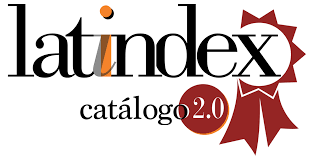Comunicación y abogacía. Análisis de las relaciones con los públicos en los despachos de abogados / Communication and advocacy. Analysis of relationships with the public in law firms
DOI:
https://doi.org/10.5783/revrrpp.v10i20.668Keywords:
Despachos de abogados, Nuevas tecnologías, Comunicación jurídicaAbstract
Resumen
En este artículo, inicialmente daremos un repaso al panorama actual en lo referente al uso de las nuevas tecnologías por parte de los despachos de abogados, para posteriormente analizar cuál es la visión subjetiva que los grandes despachos de abogados en España tienen acerca de la adopción de las nuevas herramientas tecnológicas en su actividad profesional, especialmente en cuanto a la comunicación con los clientes, y en qué medida lo hacen respetando la normativa deontológica existente al respecto en materia de comunicación. Para ello, hemos elaborado un modelo de encuesta abarcando los aspectos claves en la materia, enviada a los 70 despachos más importantes en España, obteniendo como resultado que el uso de las nuevas herramientas es ya una realidad en cuestiones como la gestión documental, el uso de páginas webs o el de las redes sociales, pero aún no en otros apartados como la utilización de Inteligencia Artificial o Big Data. En lo que se refiere al respeto de las normas deontológicas, la visión de los despachos es que se respetan, aunque se puede desprender de algunas respuestas que esto no es del todo así.
Palabras clave: Despachos de abogados, relaciones con los públicos, nuevas tecnologías, comunicación.
Abstract
In this article, we will initially review the current scenario regarding the use of new technologies by law firms, to later analyze what is the subjective view that large law firms in Spain have about the adoption of the new technological tools in their professional activity, especially in terms of communication with clients, and if they respect the existing ethical standards regarding advertising. To do this, we have developed a survey model covering the key aspects in the matter, sent to the 70 most important law firms in Spain, obtaining as a result that the use of the new tools is already a reality in issues such as document management, use of web pages or that of social networks, but not yet in other sections such as the use of Artificial Intelligence or Big Data. As far as respecting ethical standards is concerned, the opinion of the offices is that these are respected, although it can be inferred from some answers that this is not entirely the case. The development of this research is not without complications, since lawyers have traditionally been a very closed and hermetic union, reluctant to show their working methods and, even more, to vary it through the use of new tools. On the other hand, determining the sample has not been easy either, since large law firms normally operate through multiple companies, which makes it extremely difficult to discern the total turnover of each of them, beyond of the official figures that appear in the commercial registers. This is due, among other factors, to the anachronistic idea that a lawyer does not need anything more than codes and a text editor to carry out his work, since, on the other hand, communication with clients is considered as a residual aspect. That said, it should be noted that, despite all this, we have found a very high predisposition to participate in the present study, and that the responses obtained have generally been very direct and concise, without trying to avoid questions such as that of respect for professional deontology. On the negative side, perhaps we have noticed that there is a worrying degree of ignorance regarding the technological tools available for practicing the legal profession, which contrasts strongly with the existing panorama in the Anglo-Saxon market, in which the use of Big Data and Artificial Intelligence are not only an available option, but they have become essential tools and the most valuable allies when it comes to undertaking judicial strategies or communicating with their audiences. This ignorance is not about isolated cases, but, on occasions, its Communication Directors or similar figures, who consider that tools as old as SMS or telephone calls are “new communication tools”. Another surprising aspect is the treatment and importance that these macro-companies make of an aspect as important as communication, surprising that on many occasions, they do not have a specific person responsible for these tasks, being frequent that these are carried out by lawyers, partners or heads of other departments.
Keywords: Law firms, public relations, new technologies, communication.
Downloads
References
ALMANSA-MARTÍNEZ, A. (2009). Relaciones Públicas Y Medios De Comunicación. Estudio Del Caso Español. Razón y Palabra, 70. Recuperado el 7 de septiembre de 2020, de https://bit.ly/2W38UAn.
ALMANSA-MARTÍNEZ, A. y FERNÁNDEZ-SOUTO, A. B. (2020). Professional Public Relations (PR) trends and challenges. El profesional de la información, 29(3). https://doi.org/10.3145/epi.2020.may.03
ALMANSA-MARTÍNEZ, A., y FERNÁNDEZ-TORRES, M.J. (2011). La nueva oportunidad de las organizaciones sociales: estudio sobre comunicación on-line de las ONGs. En GONZÁLEZ, J. E. (Coord.). La Web 2.0 y 3.0 En Su Relación Con El EEES, 25–46. Madrid: Visión Libros.
ARCEO VACAS, J.L. (2006). La investigación de relaciones públicas en España, Anàlisi, 34, 111-124. Recuperado el 21 de septiembre de 2020, de https://bit.ly/2Wlc16N.
CAPRIOTTI, P., CARRETÓN-BALLESTER, M. C. y CASTILLO-ESPARCIA, A. (2016). Testing the level of interactivity of institutional websites: From museums 1.0 to museums 2.0. International Journal of Information Management, 36(1), 97–104. https://doi.org/10.1016/j.ijinfomgt.2015.10.003
CASTILLO-ESPARCIA, A. (2004). Investigación sobre la evolución histórica de las relaciones públicas, Historia y comunicación social, 9, 43-62.
CASTILLO-ESPARCIA, A. (2005). Comunicación organizacional, teorías y estudios. Málaga: Universidad de Málaga.
CASTILLO-ESPARCIA, A. y ALMANSA-MARTÍNEZ, A. (2004). Estudio y estructura de los gabinetes de comunicación en España. Anagramas. Rumbos y Sentidos de la Comunicación, 2(4), 47-62.
CASTILLO-ESPARCIA, A., CASTILLERO-OSTIO, E. y CASTILLO-DÍAZ, A. (2020). Los think tanks en España. Análisis de sus estrategias de comunicación digitales. Revista Latina de Comunicación Social, 77, 253-273. https://doi.org/10.4185/RLCS-2020-1457
CASTILLO-ESPARCIA, A., LÓPEZ-VILLAFRANCA, P. y CARRETÓN-BALLESTER, M.C. (2015). La comunicación en la red de pacientes con enfermedades raras en España. Revista Latina de Comunicación Social, 70, 673–688. http://dx.doi.org/10.4185/RLCS-2015-1065
CASTILLO-ESPARCIA, A. y ALMANSA-MARTÍNEZ, A. (2005). Relaciones Públicas y Tecnología de la Comunicación. Analisys de los sitios de prensa virtuales. Organicom, 2(3), 132–149. https://doi.org/10.11606/issn.2238-2593.organicom.2005.138902
DUHÉ, S. (2015). An overview of new media research in public relations journals from 1981 to 2014. Public relations review, Vol. 41(2), 153-169. https://doi.org/10.1016/j.pubrev.2014.11.002
FERNÁNDEZ-SOUTO, A. B., ALMANSA-MARTÍNEZ, A. y CASTILLO-ESPARCIA, A. (2018). Ética en las relaciones entre los medios de comunicación y los gabinetes de comunicación, Revista Prisma social: revista de investigación social, 22, 1-19. Recuperado el 15 de octubre de 2020, de https://revistaprismasocial.es/article/view/2531
HALLIGAN, B. y SHAH, D. (2009). Inbound marketing: Get found using Google. Hoboken: John Wiley & Sons.
HOTSUITE Y WE ARE SOCIAL. (2020). Digital 2020: Spain. Recuperado el 11 de noviembre de 2020, de https://bit.ly/3m8iKLN.
MACNAMARA, J. y ZERFASS, A. (2017). Evaluation stasis continues in PR and corporate communication: Asia Pacific insights into causes. Communication research and practice, 3(4). https://doi.org/10.1080/22041451.2017.1275258
MANENT, M. (2017). Disrupción en el sector legal: cinco tecnologías que los despachos de abogados no pueden ignorar. IE Insights. Recuperado el 17 de octubre de 2020, de https://bit.ly/2W8dXiZ.
MATILLA, K., MIRANDA, T., COMPTE-PUJOL, M. y OLIVEIRA, A. (2019). La formación de postgrado de los directores de comunicación españoles. Revista internacional de investigación en comunicación aDResearch ESIC, 19(19), 30-55. https://doi.org/10.7263/adresic-019-02
MAYER-SCHÖNBERGER, V. y CUKIER, K. (2014). Big Data: A Revolution That Will Transform How We, Live, Work, and Think. Boston: Houghton Mifflin Harcourt.
MCCARTHY, J. (2007). What Is Artificial Intelligence. Stanford University - John McCarthy’s Home Page. Recuperado el 27 de octubre de 2020, de https://stanford.io/3oJMQa4.
MÍGUEZ-GONZÁLEZ, M.I., BAAMONDE-SILVA, X.M. y CORBACHO-VALENCIA, J.M. (2014). A bibliographic study of public relations in Spanish media and communication journals, 2000-2012. Public Relations Review, 40(5), 818-828. https://doi.org/10.1016/j.pubrev.2014.08.002
MILLS, M. (2016). Artificial intelligence in law: The state of play 2016. Recuperado el 1 de noviembre de 2020, de https://bit.ly/3oC8CMW.
MILLS, M. y UEBERGANG, J. (2017). Artificial intelligence in law: An overview. Precedent, 139. Recuperado el 3 de octubre de https://bit.ly/346xc0y.
QUINTANA-PUJALTE, A. L., SOSA-VALCARCEL, A. y CASTILLO-ESPARCIA, A. (2018). Acciones y estrategias de comunicación en plataformas digitales. El caso Cifuentes. Revista Prisma Social, 22, 247-270. Recuperado el 7 de octubre de 2020, de https://bit.ly/3a8pSFP.
RUIZ-MORA, I., LUGO-OCANDO, J. y CASTILLO-ESPARCIA, A. (2016). Reluctant to talk, reluctant to listen: Public relations professionals and their involvement in CSR programmes in Spain. Public Relations Review, 42(3), 402–407. https://doi.org/10.1016/j.pubrev.2015.11.008
SAIZ, L. (2017). El sector legal da sus primeros pasos para convertirse en 4.0. Expansión. Recuperado el 15 de septiembre de 2020, de https://bit.ly/3nc76AO.
THOMSON REUTERS. (2020). Report on the State of the Legal Market Center on Ethics and the Legal Profession. Recuperado el 7 de noviembre de 2020, de https://tmsnrt.rs/2JOw9M6.
Downloads
Published
How to Cite
Issue
Section
License
Authors publishing in this journal agree to the following terms:
a. Authors retain copyright and grant the journal the right to be the first publication of the work as licensed under a Creative Commons Attribution License that allows others to share the work with an acknowledgement of authorship of the work and initial publication in this journal.
b. Authors may separately enter into additional arrangements for non-exclusive distribution of the version of the work published in the journal (e.g., placing it in an institutional repository or publishing it in a book), with an acknowledgement of initial publication in this journal.
c. Authors are allowed and encouraged to disseminate their work electronically (e.g. in institutional repositories or on their own website) before and during the submission process, as it can lead to productive exchanges, as well as earlier and higher citation of published work (see The Effect of Open Access).




